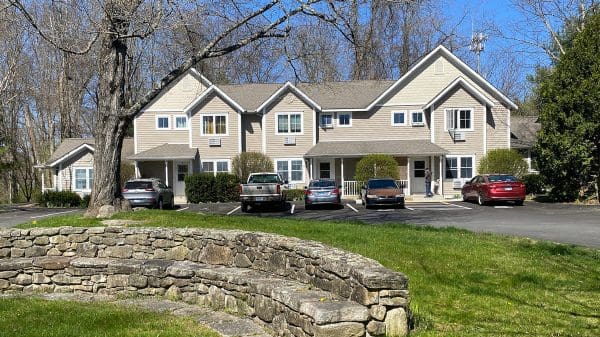FALLS VILLAGE, Conn. —Region 1 Business Manager Sam Herrick reported to the Board of Education Monday night that he expects to have a preliminary 2025-26 budget package to present at the March meeting.

He said he has been going through departmental budget proposals and still has the Regional Schools Services Center draft to complete.
“As I have been going along, I have implemented strategies to identify unexpended funds in the current budget so we can use them to make one-time purchases,” he said. “I wouldn’t use the funds for something that needs to be funded year-to-year, but we might use them for one-time purchases of sports equipment or something like that. I’m trying to keep the net budget down to a reasonable increase.”
At first blush, there appeared to be a 6.5 percent increase next year over the $17.8 million dollar budget for 2024-25, but Herrick said he had been able to bring the percentage down from the “mid-6 to the mid-4 range.” He added that there are some important items still to be added. “We’ve got to weigh everything, but it is still early in the process.”
“One big hit that came on Jan. 20 was the insurance renewal,” he said. “It’s 10.5 percent this year, where it has been 9 percent.” He added that he is also negotiating with non-certified personnel for a new contract. “That contract accounts for about 65 people over the entire region,” he said.
“The data shows the capstone projects are getting stronger. The kids have become more and more adventurous and this year’s junior class has come up with some pretty interesting ideas.“
—Ian Strever, HVRHS principal
In other business, Housatonic Valley Regional High School Principal Ian Strever reported on the capstone projects students must do to earn a high school diploma. He said the projects have gotten progressively richer in concept in the several years since the state mandated them for graduation.
In a capstone project, a student plans a project that addresses an area in which she or he has a particular interest. Strever said many of the projects are “good examples of learning by persistence.”
“The data shows the projects are getting stronger,” he said. “The kids have become more and more adventurous and this year’s junior class has come up with some pretty interesting ideas. They are a good litmus test for how prepared the students are to go out into the world and advocate for themselves.”
Jassim Mohdin, a four-year veteran of the Robotics program, demonstrated this when he described his use of CAD (Computer Assisted Design) in creating the team’s robot. He said designing in CAD saves time and confirms measurements that can then be used to manufacture the metal parts.
“CAD makes it more efficient,” he said. “You can play out the 2D design, you can make it 3D—it’s just more accurate. If you have good understanding, you can cut down the time for design and leave more time for creating it. Our team hadn’t used CAD before, and it’s a valuable tool that hadn’t been touched.”
Stever said capstone projects have ranged from a maple sugaring business to creating a golf simulator. “There were so many good ones, I had to pick and choose which ones to present tonight,” he said.
He explained that the projects are “very individualized” and that students work with a teacher who coaches them. “We try to meet the student where they are,” he said. “We had a special needs student who documented the history of baseball at HVRHS. It’s a process of trying to find the right proportion of academic rigor. The capstone projects are the ultimate assurance that they are ready to move on.”
The board deferred until its March meeting any action on school security. Superintendent of Schools Melony Brady-Shanley said each of the six local school boards had received a detailed report drawn from a recent survey and that each district will now get a chance to consider its next steps. “Some individual survey results were very different,” she said.
She also reported that a Youth Voices Count Survey that focuses on student social experiences will take place later this winter. It provides data on how students are evolving in terms of such things as friendships, how they handle conflicts, and how they feel about high school. “There are questions in the survey that we traditionally opt out of, such as about self-harm or sexuality,” she said.
Stever said, “It’s a really nice way to make comparisons over time about students’ assets such as positive role models or do they attend church. It’s a really good way to work with community organizations and to talk about deterring risky behaviors.”
“You may see changes, especially with the changing world,” said Board Chairman Pat Mechare.

























